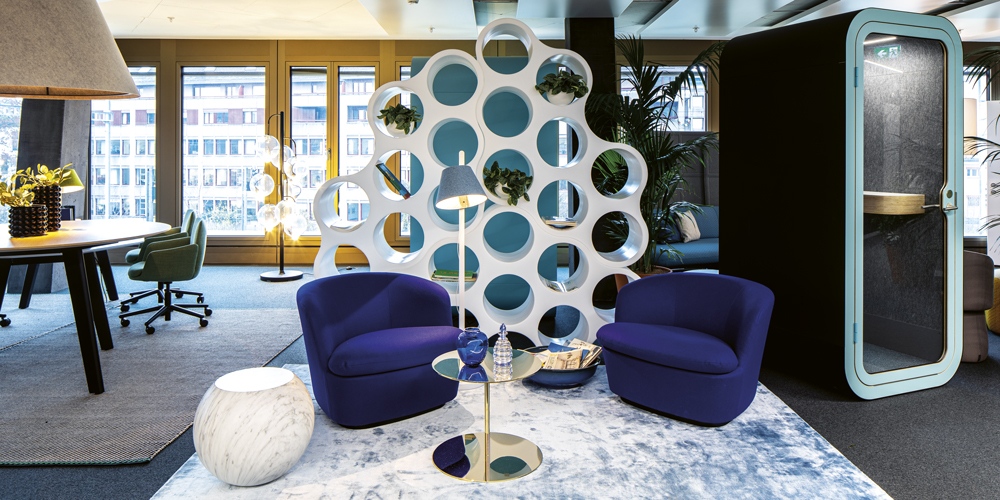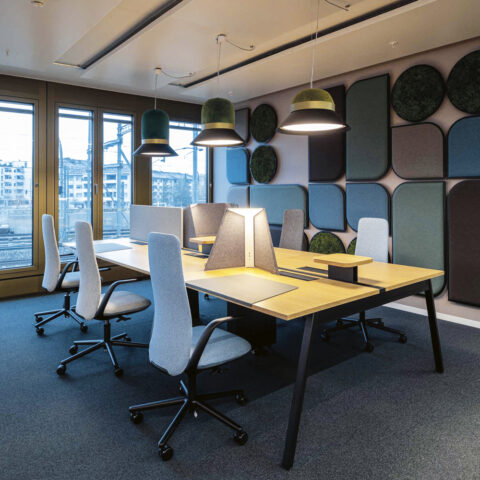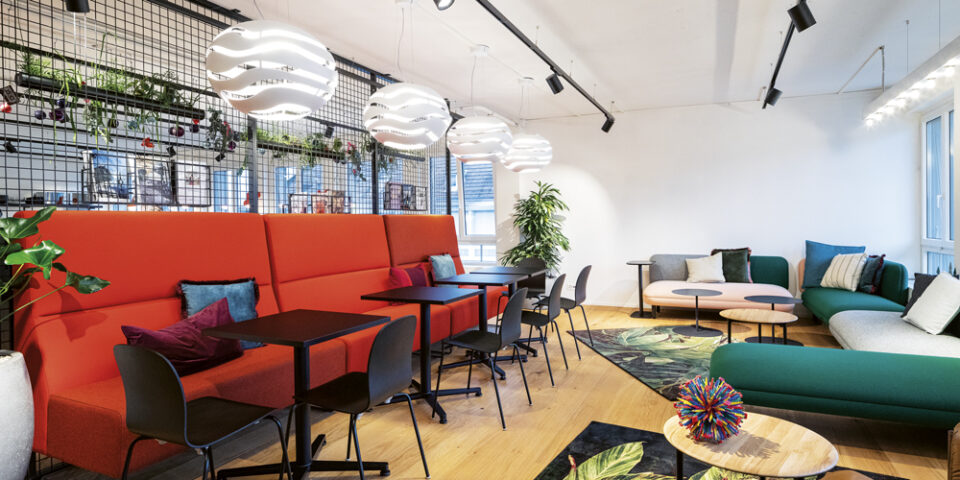This is what office design looks like today

Differenziertes Angebot attraktiver Arbeitsplatz-Situationen für unterschiedliche Tätigkeiten.
Studies show that the majority of knowledge workers will spend 40 to 60 percent of their working hours outside of the office in the future. So the home office remains an integral part of our work. But how does the office stay competitive?
How and where do we like to work or work best? This is the question that occupies employees. And the challenge that companies are dealing with.
The change from a culture of presence in hierarchical structures to a culture of trust and performance in networks is progressing. We are becoming more and more used to getting involved in common corporate goals regardless of time and place. The involuntary mass home office test in particular has shown how the definition of the workplace is changing over the long term. Companies are reactivating their offices and asking themselves: are our workspaces still up to date? It's obvious: The office with future prospects goes beyond the walls of the company headquarters. A new design normality is emerging that supports hybrid use and regards the office as part of an ecosystem.
What does office design look like today?
It depends on the location
In addition to the premises, the location is decisive for how much we are motivated to commute to the office. Employees expect good accessibility by public transport and the best catering and shopping options on site.
Cheers to diversity and freedom of choice
An attractive office is a working environment in which employees can choose the zone that best suits their current activity. So a mix of project, creative, meeting and focus rooms as well as lounge-like meeting zones. And not to forget: the workplace with the height-adjustable desk for focused individual work. Alternatives such as home office, coworking space or coffee house expand the range of work outside of the office.
The neighborhood is our territory
So-called home bases or hubs provide orientation in the office. These are neighborhoods where teams come together. Rituals are also beneficial for mutual exchange: for example the fixed office day, the team breakfast or cooking lunch together. The office design is crucial for establishing social activities among employees.
Do not disturb!
Online meetings will remain an integral part of everyday work in the future. Of course it's annoying when everyone makes the calls in the open team office. The solution? Opportunities to retreat in the form of "telephone booths" with good acoustics, ventilation and lighting. Larger cubicles are perfect for one-on-one conversations or as a temporary individual office.

Preferably hybrid
Zoom & Co. for digital meetings make the journey to the site superfluous. At the same time, we also value physical encounters. It is not a question of whether the collaboration is hybrid, but rather how much. The key lies in the spatial integration and intuitive operation of the technology.
The office as a feel-good place
How a room is designed demonstrably influences engagement, perceived appreciation and satisfaction. The acoustics are particularly important: Speech intelligibility should be high in meeting and communication rooms, but it should be as quiet as possible in open spaces. Targeted lighting and plants also ensure a pleasant working atmosphere.
Office? Yes of course!
The more natural the environment, the better we feel. Naturalness can also be achieved in the office with furniture and decoration. What is not visible at first glance, however, is the sustainability of the materials used. Wood from sustainable forestry, fabrics made from recycled materials or refurbished furniture give the office additional inner values.

Take the opportunity to shape the identity and culture of your company with the physical work environment. Show your employees why it is worth coming back to the office in the future.

To person
Oliver Hauri is the Vice President of Central & Eastern Europe and Managing Director at Haworth Schweiz AG.
In his role, he is responsible for Haworth's leadership and growth in Central and Eastern Europe. The family company is one of the world's leading solution providers for furnishing inspiring learning and working environments.
haworth.com